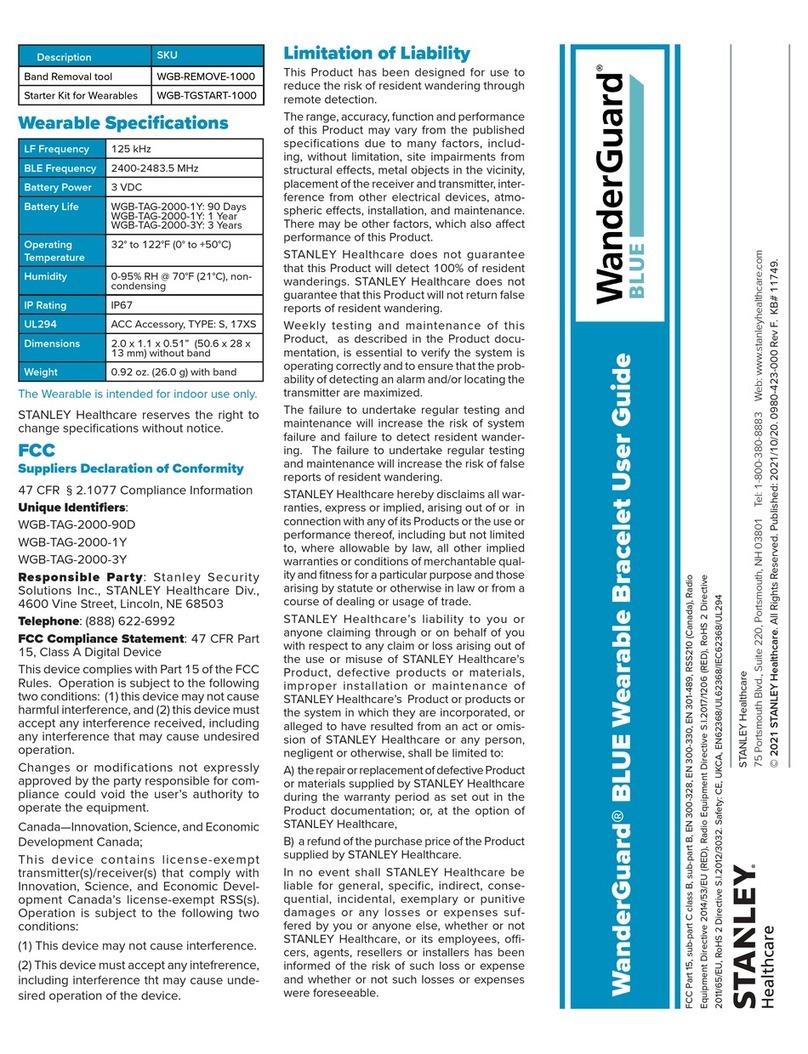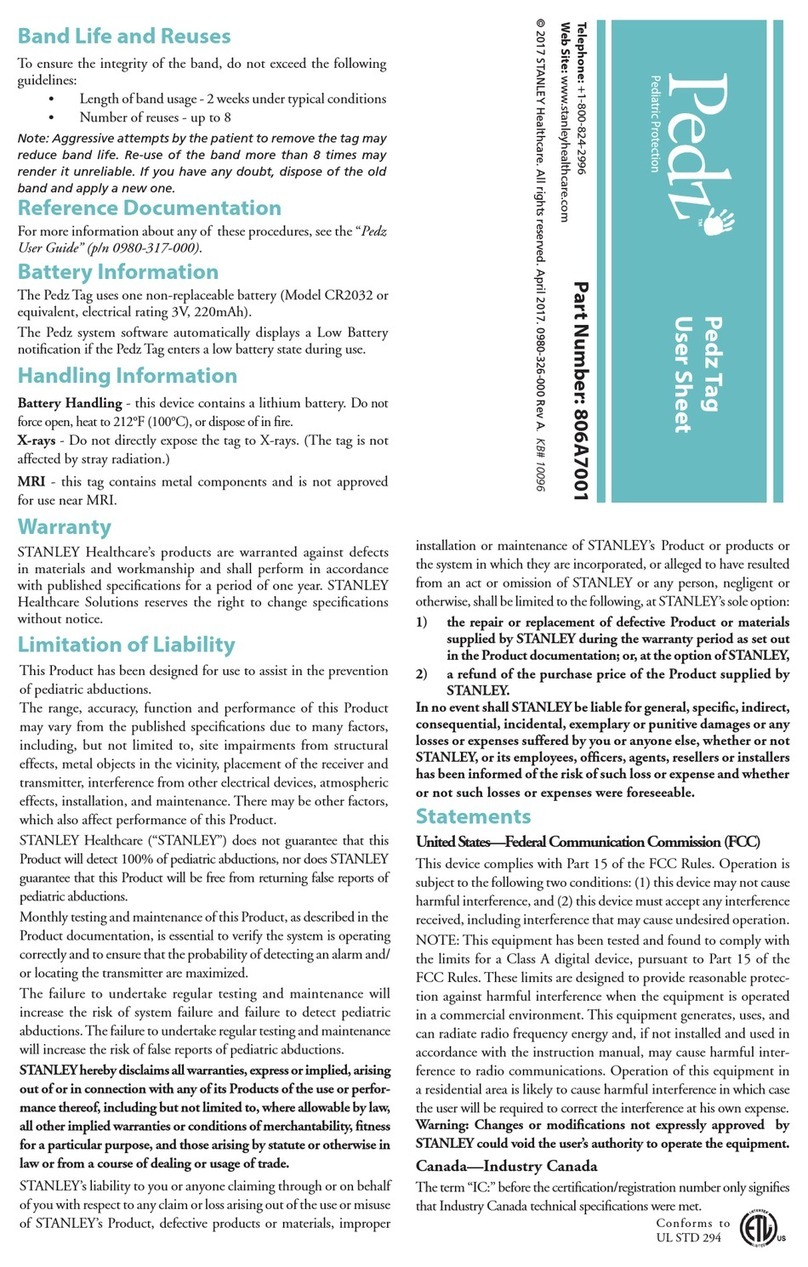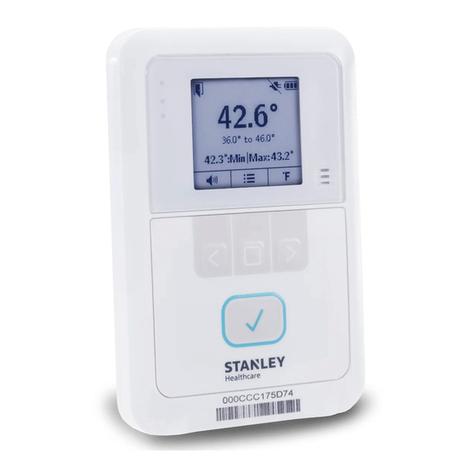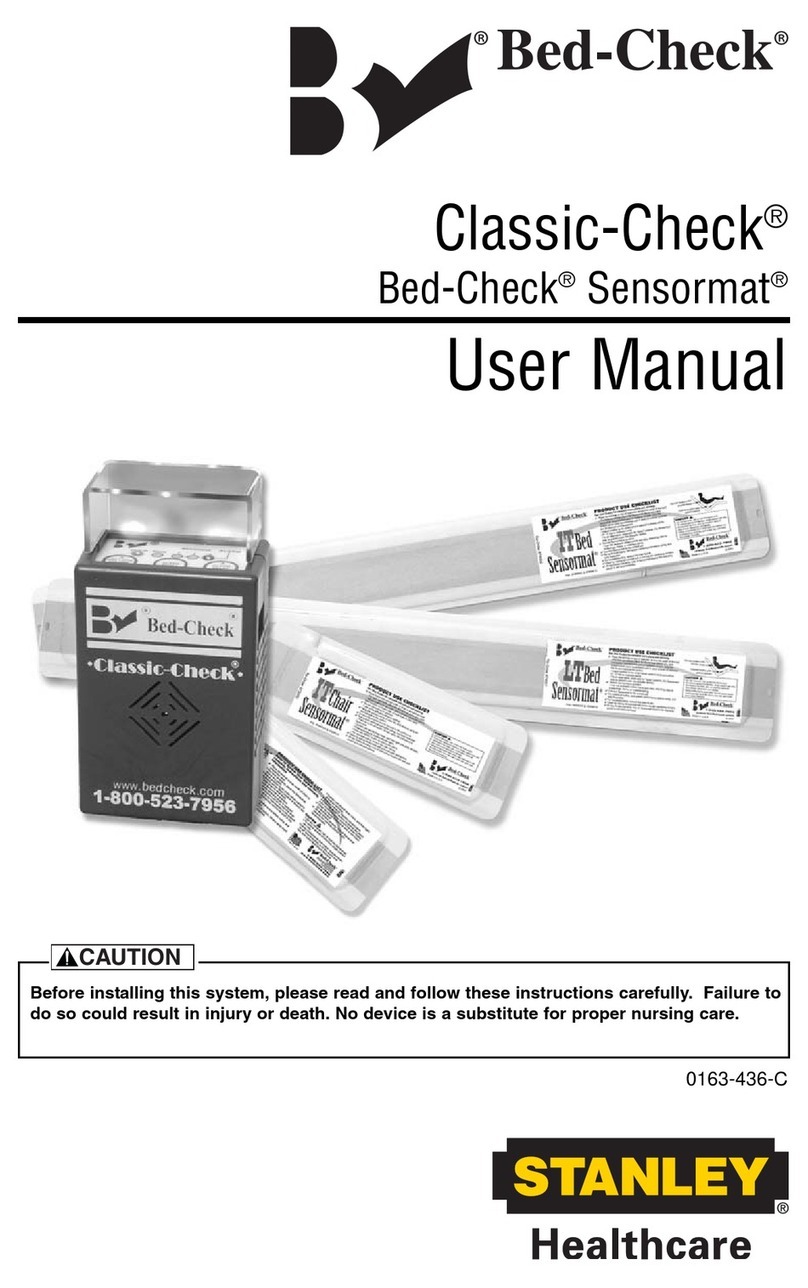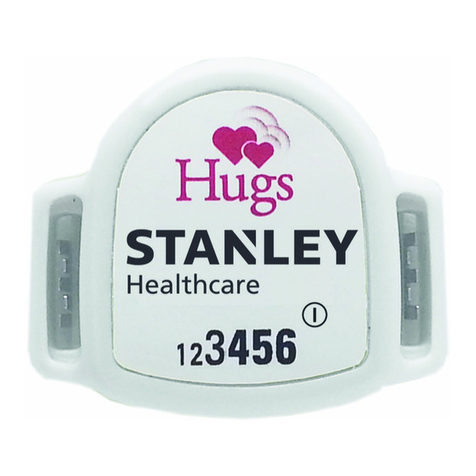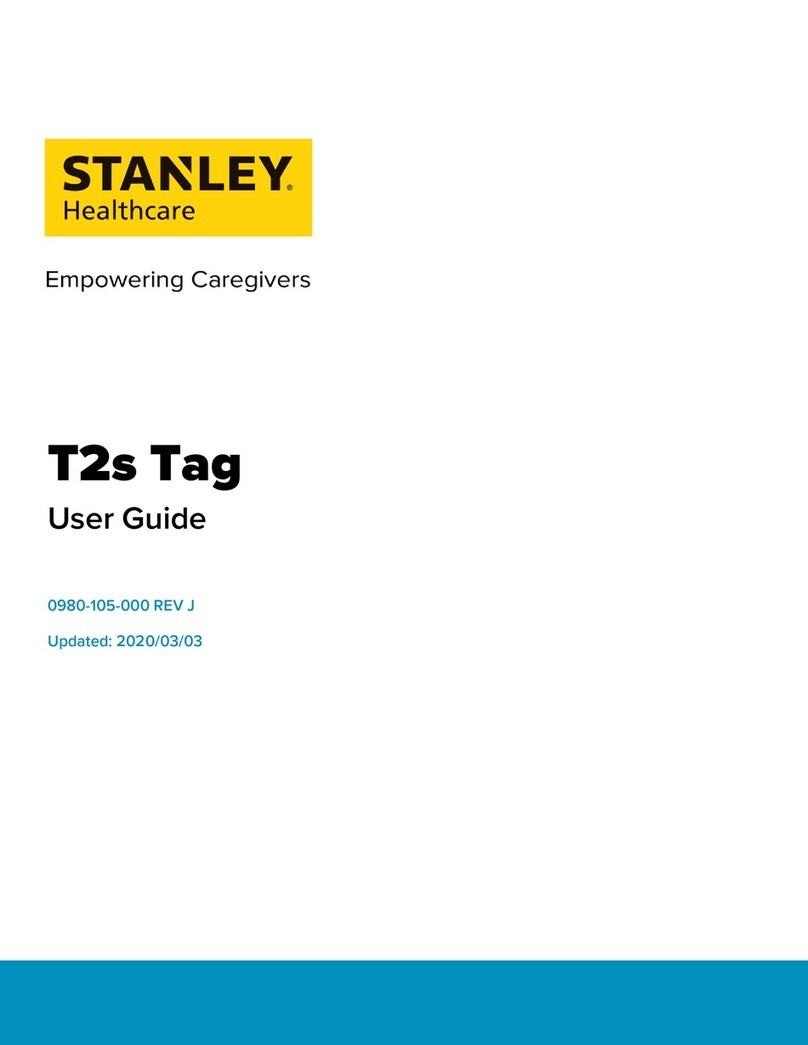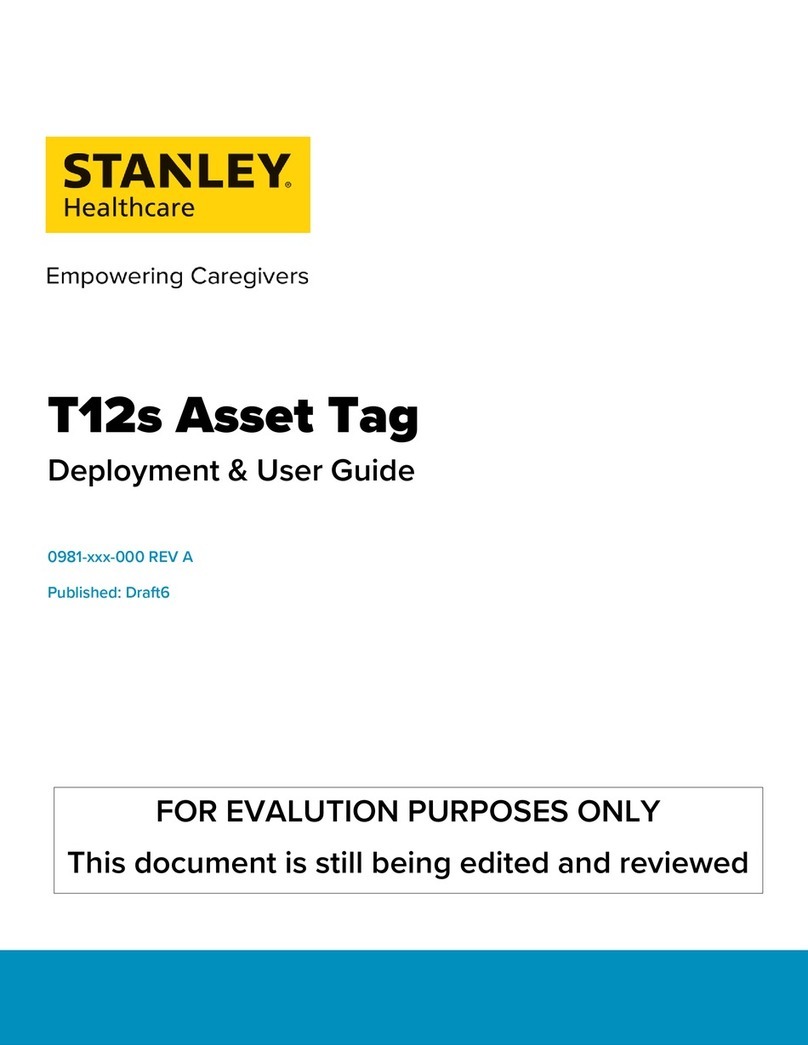
Kisses® Tag User Sheet
Instructions for the Kisses® Tag
Introduction
The Kisses Tag is part of the Kisses mother/
infant matching component of the Hugs®
and Kisses infant protection system. It is
designed to support matching ID bands
and help confirm that the correct infant is
matched with the correct mother.
”Bonding” a pair of tags is easy and
automatically occurs by bringing the
Kisses Tag in close proximity to the Hugs
Tag within one hour after the Hugs Tag
is applied to the infant. The Kisses Tag is
then applied to the mother’s wrist using
the single-use disposable Kisses band or
other standard hospital band. The tags
then remain bonded throughout the
mother’s and infant’s stay in the hospital.
Nurses are alerted with an audible
indicator that confirms the match or
mismatch of infant and mother when the
two are brought together, even if there
are other infants in the room.
Activation and Use
The Kisses Tag ships with a “Put into
Service” date calculated at 14 months
from the date of manufacture. The
Kisses Tag must be put into service on or
before the date printed on the package.
The tag is light activated and operates
for 90 days after it has been removed
from the package. The easy-to-open
packaging provides protection and a seal
against light, to reduce the likelihood of
the tag inadvertently activating during
transportation or storage. After 90 days,
the tag will indicate a low battery:
• If the tag is currently bonded with
a Hugs Tag, the low battery light
flashes. A Kisses Low Battery Alarm
also appears in the software. The tag
continues to operate normally and
does not have to be removed from the
patient.
• If the tag’s low battery light is flashing
and it is not currently bonded with a
Hugs Tag, it must be removed from
service. A low battery tag cannot be
bonded with a Hugs Tag.
Bonding the Tags
The Hugs Tag and Kisses Tag can be bonded
any time within the one-hour period after the
Hugs Tag is applied to the infant.
1 Apply the Hugs Tag to the infant.
2 With no other Kisses Tags in the area,
bring the Kisses Tag within 12 inches (30
cm) of the Hugs Tag.
3 The Hugs Tag gives a bonding indication
within a few seconds:
• 2 short beeps, 1 long beep: successful
bond
• Persistent long beeps: no bond. The Kisses
Tag has a low battery or is already bonded
with another tag. Use a different Kisses
Tag.
• No beep: no bond. Make sure that no
other Kisses Tags are within 2 feet (60 cm).
If the bond is successful, apply the Kisses Tag
to the mother’s wrist using the Kisses band.
If the Tags Aren’t Bonding...
• Make sure that the tags are no more than
12 inches (30 cm) apart, and that no other
Kisses Tags are within 2 feet (60 cm).
• Try bonding in a location a few feet away.
• Try bonding with a different Kisses Tag.
• If bonding is not successful, discharge the
Hugs Tag and try a new Hugs Tag.
Matching the Tags
“Matching” means confirming that the
right infant has been brought to the right
mother. The Hugs Tag generates a mismatch
indication if you have the wrong infant.
1 Bring the Hugs Tag and Kisses Tag within
12 inches (30 cm) of each other.
2 Listen for a mismatch warning (persistant
long beeps). If there is no warning, then it’s
a match.
3 If there is a mismatch indication, then the
two tags do not belong to each other.
Follow your hospital’s procedure for
correcting a mismatch.
Note: The Hugs Tag will only confirm a correct
match if the infant has been away from the
mother for 30 minutes.
Discharge and Reuse
How to discharge a Kisses Tag:
• Discharge the Hugs Tag. The Kisses Tag is
automatically discharged from the Hugs
system.
• Use the Discharge Kisses Tag feature.
The Hugs Tag remains active in the Hugs
system.
The Hugs Tag retains its bond information for
one hour after discharge; do not reuse it
within this period. Ensure the Kisses Tag is
cleaned before reuse. Store clean tags in the
Kisses rack, following the “first in, first out”
method so that tags are cycled regularly.
Cleaning the Tag
Note: The tag is not sterilized at the
factory and should be cleaned before
first use.
Consult with your Infection Control
representative for cleaners available to your
hospital that have been approved for use
on plastics as stated in STANLEY Healthcare
Technical Bulletin [KB# 8184] “Approved
Cleaning Materials for Patient Security Tags”
– available on the STANLEY Healthcare
Support Community (stanleyhealthcare.
com/support).
Please also be aware of the following
additional general guidelines:
• Do not use an autoclave to clean the tag
or serious damage may result
• Do not use a disinfectant with more
than 20% alcohol
• Do not soak the tag
• If required, a disposable soft-bristle
brush may be used to remove surface
dirt from the tag’s surface or the
contacts on the tag
• Rinse and thoroughly dry all tags after
cleaning
NOTE: It is very important to rinse
and thoroughly dry all tags after
cleaning. If residue remains on the tag,
the water evaporates away, leaving the
chemicals to increase in concentration.
A normally benign, mild alkaline
solution then becomes a strong (and
damaging) alkaline solution.
Battery
The Kisses Tag uses one non-replaceable battery
(Model CR2430, electrical rating 3V, 280 mAh),
located on the bottom side of the case, labelled “Bat-
tery.” Do not force open, heat to 100° C, or dispose
of the battery in fire.
Handling Information
X-rays - Do not directly expose the tag to X-rays.
(The tag is not affected by stray radiation.)
MRI - This tag contains metal components and is not
approved for use near MRI equipment.
Storage
Store Kisses Tags at room temperature unopened in
original packaging until ready for use. Any exposure
to light will automatically activate the tag.
Once placed into service, store Kisses Tags at least
2 feet (60 cm) apart from Hugs Tags when not on
a mother.
